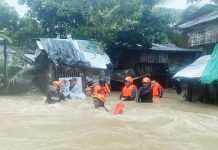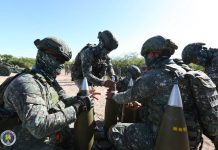
AS ALARMING as they are avoidable, the data from Western Visayas, and especially from Iloilo, should jolt regional leaders — and indeed all of us — into action. Since 1988 through March 2025, Iloilo Province has reported 2,174 HIV cases, representing 34 percent of the regional total of over 6,000 cases as reported by this paper. Iloilo City itself has seen 1,694 cases over the same period.
Worse still, in just the first quarter of 2025, 111 new infections were recorded — 40 in March alone — alongside 15 HIV‑related deaths. The most affected groups remain men who have sex with men, with 434 out of 771 male cases linked to male-to-male transmission, followed by 218 cases from bisexual activity and 139 from heterosexual contact. Alarmingly, youth are deeply vulnerable: the 25–34 age bracket accounts for 361 cases, while the 15–24 group totals 267.
These statistics expose a silent crisis emerging in plain sight: HIV is not only persisting in the local population; it is spreading rapidly among the region’s young adults and adolescents. To treat this as merely a background issue is to invite further escalation.
Yet the crisis is not just biomedical. It is social, cultural, and political. Many parents remain steadfast in their misconceptions — believing that talking about condoms or allowing access to PrEP somehow promotes immorality or early sexual behavior. They see prevention as tacit approval of promiscuity, and silence as virtue. But silence in this case is deadly.
The Department of Education is in the process of updating sex education policies and the Department of Health is developing new, inclusive prevention strategies. These are steps in the right direction — but so far, only steps. What we need now is bold leadership.
Local government units must prioritize HIV as a top-tier public health concern. That means allocating budgets for comprehensive sexual health education, facilitating youth-friendly clinics with free, stigma-free access to condoms and PrEP, and launching community outreach efforts — especially targeting parents, teachers, faith-based organizations, the media, and youth groups.
Health agencies and civil society must push for a national executive order to institutionalize all of these interventions — making them predictable, sustained, and uniform across regions. Fragmented efforts won’t suffice. People’s lives cannot wait.
We must base our policy on reality: young people in the region, especially Iloilo, are sexually active, whether parents wish to acknowledge it or not. If we disregard the data — notably, 267 infections among 15–24‑year‑olds, 361 among those aged 25–34 — we are denying our youth the tools to protect themselves.
The numbers tell us what silence hides. Watching the statistics rise in regional maps or health bulletins should be a call to arms—not a reason for quiet resignation.
Treat HIV as a public health crisis. Talk about prevention openly. Equip parents with knowledge. Empower young people with tools. And most of all, act — before another quarter brings 40 more new cases or before stigma claims more than the 15 lives lost in just three months in 2025.
The choice is ours: continue denying the data, or face the numbers — and save lives.







